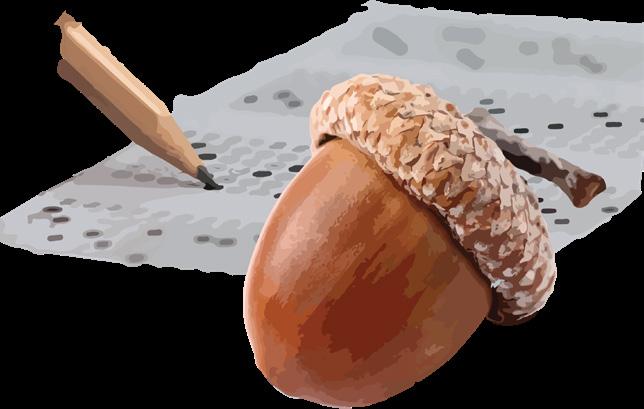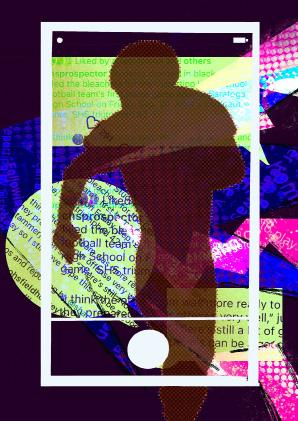THE PROSPECTOR



A deep dive into the impact of social media has had on sport teams
The Problem With the Pink Tax pg. 8
FEATURES
New Principal: Bill Schloss p. 12
LIFESTYLES
Hero or Villain? Global Sweethearts pg. 16
NEWS
Drawing Up Funds: Proposition 28 pg. 6




editors-in-chief
Benjamin Liu
Joyce Lee
Shaona Das
news editor
Brian Kuo
opinions editor
Alexander Liu
features editor
Amrita Brar
investigations editor
Nikhil Krishnaswamy
sports editor
Victoria Hunt
postscript editors
Benjamin Liu
Shaona Das
Joyce Lee
Scarlett Guy
copy editors
Amrita Brar
Hailey Ryu
Nitya Dhulipala
Victoria Hunt
photo editors
Yeechen Pang
Hailey Ryu
online editors
Alexander Liu
Katie Kim
Katie Mak
Miya Widman
Nikhil Krishnaswamy
Nitya Dhulipala
Noah Kang
Scarlett Guy Yeechen Pang
Zain Haseeb
business manager
Brian Kuo
writers
Aaron Luc, Angela Kim, Anshika Jain, Atrisa Rahgozar, Ashley Qi, Cathy Wu, Celine Zhang, Chloe Choe, Hannah Kim, Joe Zheng, Laura Chen, Madalina Zheng, Mason Lien, Nimrit Gandhi, Rebecca Wawda, Rosa Lee, Saba Sharifolnasabi
advisor Ann Shriver-Peck
“The Prospector” is an open forum of expression for student editors to inform and educate their readers. It will not be reviewed by or restrained by school officials prior to publication or distribution. Advisors may and should coach and discuss content during the writing process.
The staff of “The Prospector” seeks to recognize individuals, events and ideas and bring news to the Cupertino community in an accurate, professional and unbiased manner. “The Prospector” will not avoid publishing a story solely on the basis of possible dissent or controversy.
If you believe an error has been made or wish to have your opinion expressed in “The Prospector,” please contact us via mail or email. Letters sent become the sole property of “The Prospector” and can be edited for length, clarity or accuracy.
“The Prospector” editorial board reserves the right to accept or reject any ad in accordance with its advertising policy.
Contact Us:
chsprospector@gmail.com The Prospector 10100 Finch Avenue Cupertino, CA 95014
Dear Reader,
Welcome to another new school year at Cupertino! At The Prospector, we’ve been greeting this new year with enthusiasm, and we’re excited to finally present the product of our staff’s hard work since this past summer. We are also pleased to announce that our issues will be in full color for this year, and that we are bringing back a section of the magazine that was formerly discontinued: Lifestyles! This year, The Prospector remains committed to our mission of meaningful, human-centered reporting.
On page 12, Angela Kim and Hannah Kim behind one of the largest recent changes to our Tino community: our new principal, Bill Schloss. On a broader school-wide and district-wide level, Celine Zhang and Joyce Lee examine ways students are represented in FUHSD on page 20.
Amrita Brar expands the scope of our reporting nationwide on page 8, examining the detrimental effects and societal implications of the pink tax on women all over the country. Victoria Hunt and Yeechen Pang continue this with their article on the impact of social media on the world of sports on page 26.
Madalina Zheng’s humorous letter to the ants plaguing the CHS campus brings our first issue to a close on page 28. Your support means so much to The Prospector, and we look forward to an amazing year at CHS.
Cheers,
Benjamin Liu, Shaona Das, Joyce Lee

The Fremont Union High School District is transitioning to a By-Trustee Voting Method for the upcoming School Board elections
ALEXANDER LIU, MIYA WIDMAN, NITYA
DHULIPALA, ANSHI-
KA JAIN, CATHY WU, ZIXIN SONG staffers
3
4
2
The Fremont Union High School District is transitioning to a By-Trustee area method for board elections, in which each representative will be elected from the five zones that the district is divided into. This is so that residents of each zone will be better represented within the
school board. Voting to fill the two out of five empty seats will take place in November.
The previous system followed the At-Large policy, in which members were elected regardless of what zone they resided in. This led to the under-representation of communities in the north side
1
5
FREMONT HS
of the district and the over-representation of residents towards the south of El Camino. The transition to a By-Trustee method aims to evenly distribute power between the schools and make the Board of Trustees more representative of all students in the district.
FUHSD was prompted to make
these changes following lawsuits filed by the 2002 California Voting Rights Act, which were aimed against other schools within the state that violated equal voting rules. Additionally, the power within the school district was uneven, with representatives from certain regions holding a majority of seats on the Board and other positions of power. The residents of North Sunnyvale expressed concern about this issue, providing solutions through map proposals that were more representative of the entire community.
In these maps, the area was divided into five zones: Zone One with Monta Vista, Homestead, Cupertino and Fremont High School, Zone Two with Fremont and Homestead High School, Zone Three for Monta Vista and Homestead High School, Zone Four with Fremont and Homestead High School, and Zone 5 for Cupertino, Monta Vista and Lynbrook High School.
$193 million. “Allocations to each school site are made based on the number of students, facility requirements, contractual requirements and student needs,” District Superintendent Graham Clark said. “My thought is that the movement to Trustee Areas will not have a significant impact on the budget process.”
Outlooks of residents and leaders varied, however, with community members bringing attention
“OUR STRONG FEELING IS THAT IF THE ENROLLMENT IS BALANCED BETWEEN THE FIVE SCHOOLS, WE CAN CONTINUE TO PROVIDE EQUAL EDUCATIONAL OPPORTUNITIES AT ALL FIVE SITES.”
expressed worries that the policy, which would decrease representation from their area, may hinder their attempts to voice their concerns regarding school closures due to declining enrollment. However, residents in North Sunnyvale were hopeful that the decision would increase the area’s representation, which had continuously decreased since Sunnyvale High School’s closure in 1981.
The images below are some of the map proposals considered when dividing the district into five areas. Source: CTAD.

Approved by the Board, the Annual FUHSD General Fund Budget for the 2024-2025 school year is
to possible flaws of the new system. Parents of Monta Vista and Lynbrook High School students protested this change during a Silicon Valley school board meeting. Residents, predominantly in the Lynbrook area, voiced their concerns about the divisions and

“Our strong feeling is that if the enrollment is balanced between the five schools, we can continue to provide equal educational opportunities at all five sites,” Clark said. This new method aims to ensure a balanced power distribution among residents inside the district’s lines. If successful, families from all over the map will have representation on the Board. If unsuccessful, zones with a higher student population will have an equal amount of representation compared to zones with lower numbers of students — leading to an advantage for residents living in areas with fewer schools


NIKHIL KRISHNASWAMY, REBECCA WAWDA, CHLOE CHOE
investigations editor | writers
California voters passed Proposition 28, a 2022 ballot initiative aimed at rekindling arts and music education in public schools, providing a million dollars to the Fremont Union High School District. This mandated that 1% of California’s general allocated funds must be used annually to support the employment of additional arts and music teachers, as well as the purchase of necessary supplies in Kindergarten-12 public schools.
Said FUHSD Associate Superintendent and Chief Business Officer Christine Mallery, “[the funding was] allocated to the schools in the form of staffing and supplies, and there are certain rules that we have to abide by.”
Of the allocated funds, 80% must be used for employment, to hire more teachers or support staff, and 20% for purchasing supplies and additional resources.
Proposition 28 has the possi-
Proposition 28 brings extra funding to Cupe
bility to make a huge impact on arts education and the funds remain long term. Said Mallery, “This supplemental source of funding that was passed by the voters, Prop. 28, it’s [currently] not scheduled to end. This is an ongoing source of funding for the district.”
This source of funding provides new hope for reviving dying arts education programs in schools. At Cupertino High School, Prop- osition 28 has
“ [PROP 28] HAS ENABLED THE SCHOOL TO OFFER FOUR EXTRA SECTIONS IN ART, MUSIC AND DRAMA. ”


already made a visible difference.
Said Principal Bill Schloss, “[Proposition 28] has enabled the school to offer four extra sections in art, music and drama [...] which we probably would not have offered if we didn’t have Prop. 28.”
Additionally, Proposition 28 has allowed lower student-to-teacher ratios and overall improved learning experiences. The district is also looking to provide stipends for extra staff members to support extracurricular activities like the marching band, ensuring greater supervision and assistance for these programs.
More specifically, the funding has had a positive impact on the CHS music
program. According to Band Director Gilbert Iruegas, the program has allowed more staff to support students in the marching band, which has allowed for more one-on-one attention and a better experience for the students.
Though the Proposition 28 funds are scheduled to be around until further notice and provided every three years, there are speculations that schools may start to depend on the funding and concerns regarding what schools will do in the absence of the funds.
Transparency with funding is important. Band Teaching Assistant Momo Park explained that some large purchases
are made each year, but these decisions are typically made without the student body’s knowledge. Given the significance of how funding impacts students, it is imperative that they are informed on the logistics of the funds and currently, students generally are not given much information on funding as a whole.
While Proposition 28 funding is guaranteed for at least three years, its reliability long-term is uncertain. Despite this, it is a promising initiative that will continuously improve arts and music



education at CHS and throughout FUHSD through stipends, additional class sections and hiring employees. With persistent investment in these programs, students can expect a more enriching and higher-quality experience in arts education
AMRITA BRAR
features editor
Acustomer is strolling through the aisles of their local supermarket when something peculiar catches their eye. The exact same product, from the same company, sold at two vastly different prices. The only reason? One of these prod ucts is catered towards women.
The term “pink tax” refers to the gender-based price discrimina tion in which the costs of goods marketed towards women are inflated, despite functioning indistinguishably from their male counterparts. The phrase, coined the “pink tax” as it is the color most often used in products designed for women, was first popularized within mainstream media around the mid-1990s when the Gender Tax Repeal Act of 1995 passed in California, prohibiting unequal prices on services.
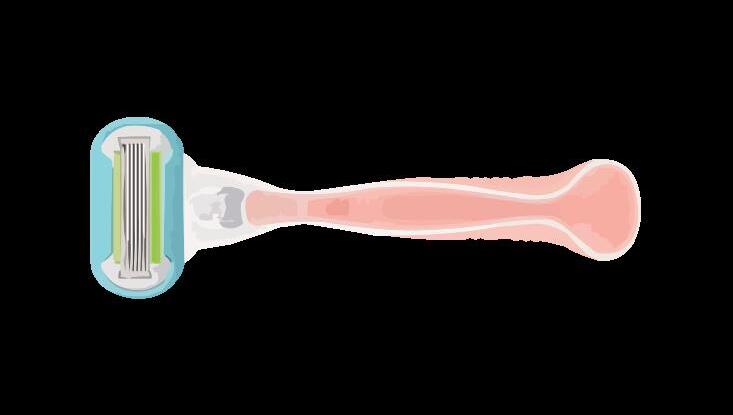



beauty.”
According to a 2020 study conducted by the California Senate Committee on Judiciary and Senate Select Committee on Wom-
girls, such as pink bikes, scooters and helmets.
Discussions surrounding the inherent gender-based prejudice that the “pink tax” is rooted
The dismissal of the “pink tax” reflects a general social ignorance towards the financial inequality women face every day. Some argue that higher prices on women’s products, particularly hygiene products, are simply a result of supply and demand, as women statistically purchase these products at a more frequent rate and in larger amounts than men do. Others insist that some businesses use higher pricing
A COMPANY CAN’T CHARGE A PINK TAX AND THEN USE MEDIA TO SAY THEY ENCOURAGE GENDER EQUALITY ... YOU DON’T GET BOTH ”

due - tions to their products that are catered specifically towards women, such as appealing fragrances, aesthetic packaging and feminine colors. Said one Reddit user, “The vast majority of differences in product costs are a result of basic econom ics: women are willing to pay more [...] for feminine-branded products and the firms selling these products price them according to competitive laws of supply and demand such that they maximize profit. There’s no broader gender discrimination.”
However, many women have never wanted or requested these unnecessary product additions and would prefer to just buy a product for cheaper as long as it serves its basic purpose. In the case of items such as razors, this can be remedied by buying products marketed towards
men, but this is an unavoidable issue in regards to services and clothing. Boycotting brands associated with the “pink tax” such as Nivea, Old Spice and Gillette, and supporting ethical brands instead is a simple and effective way students can take action to challenge this injustice in their day-to-day lives. If this is not a viable option, buying the versions of products designed for men prevents
“ WE KNOW THAT WOMEN KNOW THEIR WORTH, AND WE ARE GOING TO HELP THEM CLAIM IT. ”
SHERRY BAKER
inine products higher, consider contacting their customer service or public relations team to question why their products for women are costlier. Reaching out and encouraging local state legislators to take action is another effective alternative.
Many have also been quick to call out the performative actions of brands such as Gillette, pointing out how their claims of social awareness directly contradict their inequitable pricing. Said one X user, “OK so I’m all for the ideas in the Gillette commercial, I think it’s wonderful in theory, but a company can’t charge a pink tax and then use media to say they encourage gender equality and awareness, it doesn’t work like that. You don’t get both.”

$2831 Women spend more per year than men for the same products and services
*According to a 2020 survey from the California Senate Committee on Judiciary and Senate Select Committee on Women, Work & Families.
and reach out can also be an incredibly powerful tool in holding large corporations accountable. If a company is unfairly pricing their fem-
Other corporations have taken the initiative to adapt their pricing and marketing strategies in response to the steadily increasing awareness surrounding the “pink tax.” For example, Boxed, an online retailer that sells a variety of bulk items, has significantly lowered its prices on female-targeted goods to combat the luxury tax that some states charge on tampons and pads. In addition, European Wax Center, a popular chain of hair removal salons, has organized a campaign dubbed #AxthePinkTax in an effort to educate consumers and amplify women’s voices.
Said Sherry Baker, President of Marketing and Product Development for European Wax Center, “[This is] money women will never get a say in how to spend and money that will never get invested, donated or used to fund a passion project or business. We know that women know their worth, and we are going to help them claim it.”
NITYA DHULIPALA
in-depth editor
The Museum Association
Code of Ethics promises to “treat museum collections as cultural, scientific or historic assets, not financial assets.” While this may seem obvious, numerous museums have struggled to meet this standard.
Many modern-day museums align with the centuries of conflict and colonialism they display in their exhibits through their lack of respect for artifacts and the countries they are from. Countless large museums present cultural artifacts taken from their original countries, as seen with the British Museum, which holds stolen cultural artifacts ranging from the Rosetta Stone to the Parthenon Marbles. It is also a common trend for museums to display offensive and graphic images for profit and inaccurately present the artifacts they display. To become more ethical, these museums should return the artifacts to their countries of origin and stray away from using harmful business tactics for commercial gain.
Should repatriation, the return of stolen artifacts to their countries of origin, not be feasible, the cultures represented must be portrayed accurately and respectfully, rather than perpetuating harmful stereotypes or merely using these significant relics as decorations for a curated aesthetic.

expanding its controversial history of profiting from historical violence.

An artifact is more likely to be respected when displayed in its place of origin, rather than being reduced to just another item in a museum of looted treasures in a foreign country. These artifacts are vital to the countries they come from, and their significance diminishes when located in a place where they hold no direct cultural relevance.
Museums need drastic reforms in the unethical ways in which they source artifacts, often through cultural theft. The British Museum itself has admitted on its website that “the British Empire [...] acquired both large and small collections in the countries under British rule [...].” Nevertheless, a majority of these items from across the world continue to be displayed, rather than being returned to their places of origin. Furthermore, the British Museum’s funding has historical ties to Sir Hans Sloane’s wife’s slave plantations in Africa,
Additionally, museums have profited off of distressing subjects, as seen at The Museum of Death, which displays graphic crime scenes, explicit photographs and body bags. These exhibits depict real crimes involving real victims, and the insensitivity is further heightened by the selling of merchandise featuring distressing images of notorious serial killers. It is also a common trend to see museums misrepresent the cultures they display through the placement and arrangement of artifacts in their exhibits. An example of this includes artwork from indigenous tribes or minority groups frequently being placed in ethnographic museums, rather than art museums. This practice reflects the broader issue of minorities being excluded from the mainstream art world. The Metropolitan Museum has received praise for featuring Indigenous art in its American Art wing, demonstrating how rare inclusivity in museums is — so much so that an unassuming act like this led to such significant acclaim. Unethical museums also have a habit of using these cultural artworks and relics as decoration, with the help of specific lighting and aesthetics. While these differences may be subtle, they allow for increased subconscious bias. There are many examples of

museums that respectfully han dle the works they display. For instance, the Auschwitz-Birke nau State Museum is wide ly recognized for its dignified portrayal of the concentration camps of Nazi Germany, with all artifacts preserved and re spected on-site. Similarly, while the Pompeii Antiquarium is often a controversial topic due to its graphic displays of a fatal event,
“
THE BRITISH EMPIRE [...] ACQUIRED BOTH LARGE AND SMALL COLLECTIONS IN THE COUNTRIES UNDER BRITISH RULE [...].
it is notable for at least keeping artifacts at their original site rath er than displacing them from their country of origin. These museums are proof that unethical practices such as cultural theft and biased displays are not necessary for profit.
However, museums play a cru cial role in helping the general public explore various cultures and historical periods in a single location, and without an accessi ble and streamlined way for peo ple to access these artifacts, the public likely could not appreciate

them to the extent that we do today. Additionally, the types of practices a museum may need to implement to be truly ethical may be difficult to achieve. Nevertheless, as difficult as it may be, it is a possible feat, as some museums have already taken the first step in returning stolen cultural artifacts in their possession to their places of origin. For example, the Louvre returned seven Italian artifacts after uncovering their wrongful acquisition, and the Manchester Museum is in the process of returning thousands of stolen items to Indigenous Australians. If these museums can take such measures to amend their unethical actions while still being considered some of the best collections in the world, then all institutions should be expected to do the same.
Thus, museums should risk being boycotted if they continue to profit off of stolen artifacts or misrepresentations, as they should be pushed to return these pieces to their native countries and begin accurately displaying what they ethically source. Significant steps are already being taken to ensure that all repatriation requests are honored, particularly in France, where President Emmanuel Macron is actively drafting laws that mandate museums to return artifacts upon request. Although progress is being made, this is only the start of a major reform in museums



Exploring new Cupertino High School principal Bill Schloss’s background in teaching, what brought him to CHS and his goals for the student body this year
Bill Schloss took on the role of Cupertino High School’s new principal in July, following former principal Kami Tomberlain’s retirement.
As the principal, Schloss upholds a firm commitment to ensuring that students are both supported and intellectually challenged. Said Schloss, “I want to provide the best possible education for [the students], the most challenging and rigorous education that we can to prepare them for the next level, but also with tremendous support.”
Schloss was born and raised in Portland, Oregon and grew up with his dad, who worked as a teacher. He was deeply in-
fluenced by his father’s resourcefulness, which helped him obtain qualities that have influenced his approach to education and being a principal today.
“You know when your dad’s a teacher, there’s not a ton of money in teaching in Oregon so he was always looking for deals and making things happen,” Schloss said. “My dad was kind of a wizard when it came to providing for his family and making everything happen for them.”
Throughout Schloss’s childhood, he frequently engaged in outdoor activities and athletics like skiing, baseball and football. Sports were more than just a pastime — they were a central part of his upbringing.
“My family was really built around sports and activities and
stuff and none of us played any instruments, none of us took lessons. Just wasn’t part of what we did. The opposite of my kids,” Schloss said.
Schloss pursued both his bachelor’s and master’s degree at the University of Southern California. After graduating from USC, Schloss went directly into teaching.
Having over 24 years of experience, Schloss has developed extensive expertise as the principal at California High School for 14 years. Schloss said, “I [was] a principal [at California High School] for about almost 14 years now and it’s the best job I’ve ever had. But it’s also the most complex.”
Schloss defines his values clearly as a principal, emphasiz-



ing a balance of hard work, enjoyment and mutual respect within the school community.
“We’re going to work really hard, but we’re going to have a lot of fun, and we’re going to be good to each other. That’s probably the real key for me is those sorts of things,” Schloss said.
Regardless of unforeseen circumstances, CHS’s students remain Schloss’s first priority.
“I think the older I get the more I’m willing to give kids a second, third, fourth and fifth chance, and I try to influence the people around me to do the same,” Schloss said. “Our job is to serve you guys.”
Schloss’s primary goal is to maintain Cupertino’s prior culture
maintain Cupertino’s prior culture and take over Tomberlain’s role with minimal impact on

“WE’RE GOING TO WORK REALLY HARD, BUT WE’RE GOING TO HAVE A LOT OF FUN, AND WE’RE GOING TO BE GOOD TO EACH OTHER.
”
students. Already having gotten a taste of it as the new principal at Cupertino, Schloss said, “I feel very much at home already. I just
SCARLETT GUY postscript editor
Afeel so very lucky to have landed in a place where I feel comfortable almost immediately. I feel like it’s a wonderful place for kids to go to school, which is exactly the kind of place I want to work. It’s a very supportive environment.”
Schloss reflects on the preexisting strength of the Cupertino community.
“I think there were fantastic things going on at [this] school before I got [here]. There will be fantastic things going on at this school after I’m gone,” Schloss said, “And my job is to be a caretaker and a steward of the great work that the teachers and staff do.”


s the 2024-2025 school year begins, there is a considerable amount of new additions to the Cupertino High School staff. David Chen, Alexander Shieh and Dulce Hernandez are on their journeys of navigating a new school and coworkers. For CHS students, however, new educators bring unique insights and fresh ideas that can magnify their learning experiences
“I did my preliminary teaching credential at UCLA. I had a rough start entering into teaching as I had two teaching positions that didn’t work out from overall anxiety starting the school year.”

“I believe that you get to know a culture and community with time. I am looking forward to learning about Tino’s culture and what my student’s community as well.”
“I feel very accepted in my position as the ‘newbie’ of the science department. Funnily enough, students seem to forget that I’m in my first year at CHS, so I’m learning alongside them.”









Exploring the benefits of the new ELD Buddies Program in supporting ELD students
CATHY WU, MADALINA ZHENG, MASON LIEN, JOE ZHENG, AARON LUC writers
In partnership with Cupertino High School’s English Learning Development Department, CHS’s International Club has cre-
educators expressed their concerns about language barriers negatively impacting the students and their experiences. Junior ELD student Jimmy Li states that being in ELD innately creates a disconnect between
ticipate in such activities.
“I tried to go to [a club]. Since it was the first day, they talked so fast, I got lost,” Patino said. “[I] never went again.”
Lynn Chen, an ELD level


Program” to connect ELD students with the rest of the student body. The system encourages students to interact with members of other ELD divisions and native English speakers to foster interconnectedness on campus.
foreign students and the remain ing student body.
“I think ELD is like a lock, and we can only take the lower level [classes] despite our abilities as students,” Li said. “It’s hard to communicate with native speakers when we feel [constant] pressure, especially [at]

Over this past summer, International Club officers began developing a school-wide program for ELD students to interact with participants outside of their social circles. The officers collaborated with Cupertino’s ELD advisors and administrators, and began promoting the program through translated flyers and other campus news outlets.
In years prior, issues regarding the inclusion of students in ELD on campus arose as ELD
the lower levels of ELD, such as [levels] one and two.”
that activities at school relating to internationally recognized interests tend to be more popular among ELD students than those that are not. To increase participation from ELD students, she highlights the importance of creating communities surrounding com-

In addition, ELD students often struggle to form bonds with other students due to how schoolwide activities such as rallies and clubs are often not catered towards English-learning students.

ating that culture of noticing them when they’re not being talked to, or [doing] the things that they enjoy,” Chen said. “I would say that draws kids out of their shells a lot more.”
Sophomore Nicole Gonzalo Patino, who has spent four years in ELD learning programs, noted that negative experiences can inhibit ELD students’ willingness to par-
With the ELD Buddies Program, International Club seems to be meeting that demand. Senior Sophie Hua, president of International Club, described the




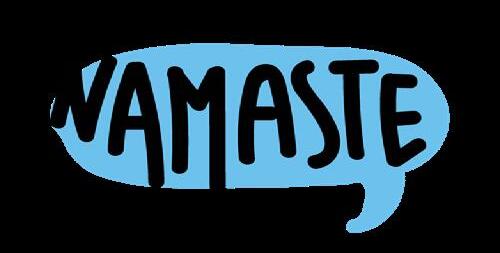
objective of “ELD buddies” as for students in the department to continue building connections with others and to integrate themselves with the rest of the student body.

first meeting for the new program on Wednesday, Sept. 11, with over 70 attendees. It was hosted at the ELD center for all students to indulge in snacks, board games and other activities organized by club officers. Many attendees

meeting, attributes the program’s appeal to the incentive students are given to attend. They are given an opportunity to branch out to students who do not speak


make friends,” Hua said.
As more ELD Buddies events are held, the International Club will continue to develop the program to improve the overall ex-

“
‘I WANT TO CONNECT.’ I THINK THAT’S THE THING THAT I HEAR THE MOST.
LYNN CHEN
”
perience of English-learning students and to ensure that it has a long-term impact on the CHS campus. The implementation of the program is a positive step forward towards meeting more of the ELD students’ needs.
Said Chen, “‘I want to connect.’ I think that’s the thing that I hear the most.”

“It was crazy. It was like we had games planned, and we weren’t able to do them because it was so surrounded by so many people,” Hua said. “But I’m really happy that people were able to find each other and basically connect over their shared language. I think that was really, really nice to see.”
Li, who attended the first
feel involved with the school without the constraints of being in ELD.
“Something that we can provide as an International Club is we’re able to bring these people together and can see ‘Oh, we’re not so different’ [...] Our biggest goal with this buddy system [is] to have ELD students
VICTORIA HUNT, HAILEY RYU sports editor | copy editor
It only takes one statement to ruin someone’s life.
through recurring cycles of receiving love and hate from the public, while their male counterparts are rarely held to the same standards. For example, Taylor Swift, who is often referred to as “America’s Sweetheart,” has faced her fair share of controversies since her rise to fame. In July 2016, Kanye West infamously included a fake image of 18-year-old Swift naked in his music video “Famous,” also taking credit for her fame. Swift responded on Instagram that she

past, West has posted anti-Semitic statements, worn a White Lives Matter shirt during the Black Lives Matter movement and done numerous other controversial things. West has rightfully received significant backlash for his actions, but Swift has unjustly received similar amounts of hate, taking the heat for West’s actions.
In many cases, the public does not care about holding celebrities accountable, instead focusing on putting down successful women due to
former wife, then leaked an edited phone call to frame Swift as a liar. #taylorswiftisoverparty soon became the number one trending hashtag on X. People also took to Swift’s Instagram, flooding her comment sections with snake emojis, and even calling her names like calculating, attention-seeking and a
She then disappeared from the public eye for a
Despite Swift successfully reemerging onto the music scene in 2017, West was never held accountable when the full phone call was leaked in 2019, revealing that Kardashian and West were lyIn the

internalized misogyny. This cycle of hate towards female celebrities is seen beyond the music industry, extending itself into Hollywood — and even celebrities’ personal lives.
In 2019, actor Johnny Depp sued his ex-wife, actress Amber Heard, claiming Heard defamed him with allegations of domestic abuse in an opinion editorial published by The Washington Post in 2018.
While these allegations seem as though they should be private between a divorced couple, due to Depp’s large platform, the public became quickly involved, ready to turn on Heard without looking at
the full story.
According to Vox’s article, “Johnny Depp, Amber Heard and their $50 million defamation suit,” the couple’s marriage counselor determined their relationship to be mutually abusive, stating clearly that neither was innocent.
Despite these facts, the public chose to put Heard under public shame, referring to her as “Amber Turd” and trending hashtags like #AmberHeardisanabuser. Meanwhile, Depp received almost all of the pub-
significant amount of career opportunities due to this controversy and has since completed only her ongoing projects, whereas Depp has returned to the acting scene as the star of a recent French romance.
lic’s sympathy, with terms such as “Justice for Johnny” gaining immense popularity.
The support he had was further exemplified by the crowds of people who waited outside the courtroom, ready to cheer for him as he was leaving. Many completely disregarded the fact that Heard won the court case in the United Kingdom.
Although both Depp and Heard were in the wrong, this is an extreme case of the public turning their back against the woman in a serious situation. Heard has lost a
Anonymous User
is replying
Does the public truly care about holding celebrities accountable, or just about putting down successful women due to internalized misogyny?

Aside from interfering with celebrities’ personal lives, the public seems to perceive even the slightest actions of female celebrities as annoying, not giving hate to male equivalents for significantly more severe actions.
Jang Wonyoung, a Korean pop idol, faced immense backlash for simply eating a strawberry with two hands. She was sent death threats, got shamed for the way she was eating and was called a “pick-me” on social media by fans. However, the same fans have unconditionally supported male idols and continued to defend them despite their outrageous crimes. One example is the Burning Sun scandal, in which male idols Jung Joon-young and Seungri were involved with sex trafficking. Some fans have expressed that these scandals may have been publicized so that the idols’ management companies could cover up their own conflicts. Additionally, Seungri and Jung only had to serve 18 months and five years
respectively, and this was after Jung’s sentence was reduced from six to five years. Even after serving sentences in prison for their crimes, both idols still remain somewhat active, though not in the public eye, and are supported by fans — Seungri was spotted in Malaysia performing at a party and Jung was recognized in France. Despite the clear difference in the magnitude of these events, female idols constantly receive hate for innocent actions while fans do not hold male idols accountable for their more severe wrongdoings.
From “America’s Sweethearts” to “fake” or “pick-me’s” in the public view, female celebrities know no shortage of love and hate from the public. Is the hate they are receiving justified, or is it the sexism that is so deeply rooted in our society?
“PICK ME”
ROSA LEE writer
Already two steps behind society, mukbangers are steadily losing track of their health conditions. In a rare case, infamous 32-year-old mukbang YouTuber Nikocado Avocado, whose real name is Nicholas Perry, recently made a U-turn back towards achieving a healthy lifestyle. Perry, who used to devour intangible amounts of food routinely, shed 250 pounds in the past year. The young influencer’s drastic weight loss hinted that the mukbang community may not be what it appears on the superficial level.
Mukbangs, videos in which content creators consume large amounts of food, are currently a hot topic across social media platforms. These trending videos originated in South Korea with the purpose of providing company to

solo eaters. However, mukbangs have slowly transformed into much more sinister content. As the popularity of mukbangs grew, viewers started raising concerns about the unhealthy, dangerous and even grotesque eating habits they observed.
Although viewers witness the destructive eating habits of mukbangers, many fail to address the concerns surrounding the ethicality of mukbangs. Mukbangers do not simply consume large meals, but practically gorge on an amount that typical families would consume. Without proper care, overconsumption gradually destroys one’s internal organs and can even cause death, as shown by Pan Xiaoting, a Chinese internet personality who recently passed away during her livestream from a stomach tear after consuming 22 pounds of food, according to Daily Mail.
Despite mukbangs’ initial purpose of providing company to solo eaters, numerous channels upload food videos for malevolent purposes. Feeder accounts, or channels that feed into the fetishes of people, have been on the rise. Viewers with specific fetishes
pay feeder accounts to eat extremely unhealthy food in messy ways, which encourages sickening behavior such as stuffing one’s mouth with handfuls of food or letting cupfuls of sauce drip off one’s mouth. This rise in feeder content exposes mukbangers to potential customers, who will pay them great deals of money to endorse their fetishes. This can transform the mukbang community, which originally swarmed with food enthusiasts, into a marketplace for feeder accounts.
Not only do the content creators themselves acquire unhealthy habits, but viewers are impacted by mukbangs too. Said registered dietician Grace Derocha in a CNN article, “The more extreme videos could encourage some viewers to overeat, avoid certain foods or fail to eat the various nutrients their bodies need.”
For individuals who already have unhealthy relationships with food, mukbangs may aggravate their conditions. Said Suzanne Fisher, another registered dietician, “I think a lot of it is almost voyeuristic in a way, almost romanticizing what it would be like to consume such a large amount of food.” Fisher explained that individuals with eating disorders may use mukbangs to suppress their appetite.
In addition to the inducement of unhealthy eating habits, a variety of abnormal food creations originated from mukbang videos
— candied burritos, torched gummy bears and more grotesque inventions. While these food combinations are creative, viewers subconsciously follow these trends and gradually justify the incorporation of bizarre dishes into their diets.
A group of researchers conducted a study about the direct effects of mukbangs on students’ eating habits, and the results were startling. Said researchers Sang-yeon Park, Jeongha Eom, Sangyoun Choi, Jinhyun Kim and Eunchol Park, “38.6% of students watching Mukbang and Cookbang reported they are subjectively affected by
the video,” meaning the students themselves have tried recreating the noxious foods consumed in mukbangs.
subjectively affected by mukbangs in their eating habits
Despite the drawbacks of mukbangs, some argue that mukbangs cultivate cultural appreciation. TikTok creator @ mariavehara257 recently went viral for consuming a Dubai chocolate bar filled with pistachio paste and kataifi. The secret ingredient in these chocolates, kataifi, are crispy pastry shreds used in several Dubaian desserts. As a result of @mariavehara257’s influence, food influencers are starting
to incorporate kataifi and other Dubaian ingredients in their recipes.
Despite the Dubai chocolate craze, unhealthy eating habits are still more prominent in mukbang culture. Even when mukbangers feature cultural food, they often ingest massive amounts of the dish, which promotes repulsive behavior.
While mukbangs serve as entertainment to many, the overconsumption observed in such videos is detrimental to content creators’ health, and viewers may subconsciously copy or adapt to the unhealthy eating behaviors portrayed in mukbangs. Mukbangs may unknowingly be twisting societal norms and universal standards about health. As viewers, students of Cupertino High School should reconsider how the adverse effects of mukbangs may alter our society


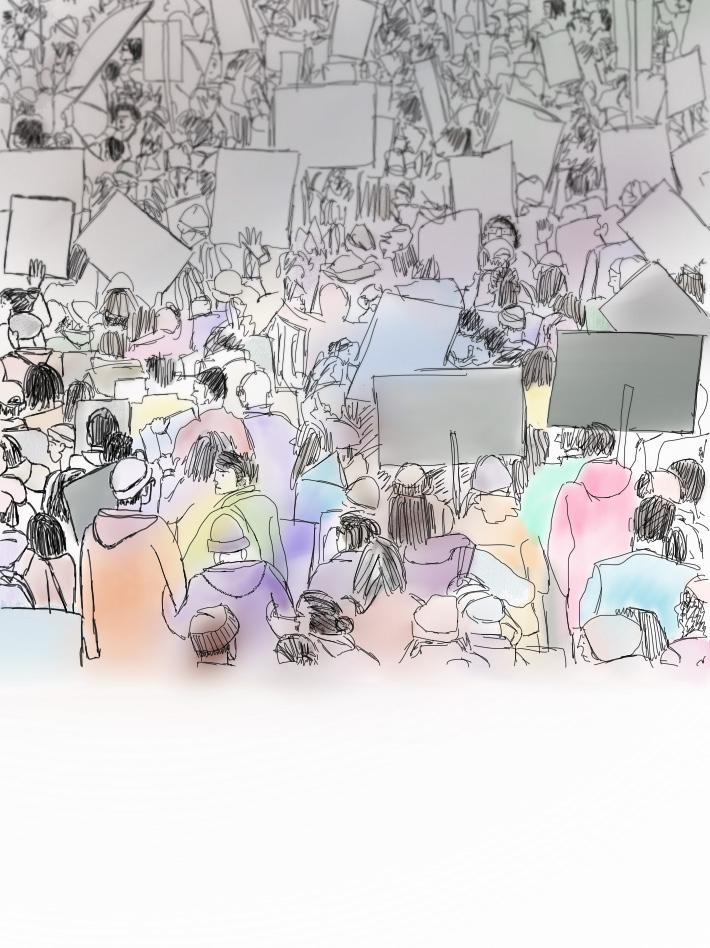
How well are students’ opinions represented in FUHSD?
CELINE ZHANG
In addition to academic excellence, Fremont Union High School District heavily values student engagement at the district level. Trudy Gross, FUHSD’s Associate Superintendent of Teaching and Learning, works closely with student leaders and advocates. Gross communicates frequently with the Student Board Representative, Intra-District Council and other student groups.
Originally a teacher, Gross continues to build meaningful relationships with students. This involves taking note of and addressing their concerns. Said Gross, “I feel like one of the [things] I’ve been able to do working with IDC is really listen to what the students are hearing, what they’re experiencing [and] what questions they have.”
This emphasis on communication carries over into the work of the Student Board Representative. Gross has collaborated with the representative, a different FUHSD student each year, for six years. The representative acts as a liaison between the board and their peers. They raise awareness of what the board does and
share peers’ concerns at board meetings, calling attention to student perspectives.
In some school districts, student board members play a largely symbolic role — their input and importance are limited. This is not the case in FUHSD. Said Gross, “The connection that our student has with our board, and the degree to which they are truly brought in as a member of that board, is very significant.”
FUHSD board members routinely ask for the representative’s opinion, making it more impactful. Students are encouraged to share any concerns they have with the Student Board Representative. Although student involvement dipped after the COVID-19 pandemic, it is now on an upward trend. An example is the FUHSD Climate Collective, which was created by former Student Board Representative Elisa Floyd in 2023. Through the Climate Collective, students present sustainability concerns and advocate for district-wide change. Said Gross, “Students are having a real connection to that work particularly.”

TRUDY GROSS
es more accessible.
In addition, each school’s Gender-Sexuality Alliance and Equity Task Force work with district leaders to improve in- clusivity. A few years ago, GSAs from all five schools implemented a district-wide process for name and gender changes.
Said Gross, “We’d want to know the best way to publicize the information, how the process would work, et cetera, so a colleague of mine and I had convened all the Gender-Sexuality Alliance groups and shared the process with them.”

The FUHSD Wellness Council is another approach to student representation. Formed in response to changing educational policies, this group advises district leaders on student wellbeing. Areas of focus include sleep, nutrition, workload and mental health. The Wellness Council ensures that FUHSD’s goals and the resources it offers align with student values.
“THE CONNECTION THAT OUR STUDENT HAS WITH OUR BOARD, AND THE DEGREE TO WHICH THEY ARE TRULY BROUGHT IN AS A MEMBER OF THAT BOARD, IS VERY SIGNIFICANT.”
Students’ considerable participation in district activities has made a tangible impact. In previous years, for example, students updated FUHSD’s website to make financial aid resourc-

Gross also emphasized the diverse backgrounds of student leaders at the district level. In addition to members of the Associated Student Body, she has collaborated with students from clubs such as Future Business Leaders of America and Model United Nations. Regardless of extracurriculars, student advocates within FUHSD are comfortable speaking with adults and garnering peer support.
“By the time someone is applying for Student Board Rep or considering Intra-District Council, […] they’ve gained some skill around thinking about what it is they’re advocating for, and determining to whom to advocate, and also being able to network with their peers,” Gross said. “Because you need to have some grassroots efforts there as well.”


JOYCE LEE editor-in-chief
On a school and district level, students from each of the five Fremont Union High School District schools, as well as Middle College, are represented by the Intra-District Council, consisting of IDC Representatives, officers and the Student Board Representative. Each FUHSD school has two IDC representatives, who participate as part of the Associated Student Body and the IDC Council, while the Student Board Representative is chosen from one of the FUHSD schools and represents all five high schools.
Said senior Kira Liang, one of Cupertino High School’s two IDC representatives, “I think our school does a great job at every function of supporting student life, mental health and all those things. But I feel like there are things that we may not really know, and the school can’t really address, and I [want] to be there to help students advocate for themselves in more public spheres that seem more formal and it’s harder to communicate what they want.”
Recently, Liang, her fellow CHS IDC representative Lawrence Chen and Associated Student Body President Annabel Liu released an anonymous feedback form for students to voice their
concerns.
“Every time we get a response, we’ve been communicating with admin about what’s the best way to go about addressing these concerns,” said Chen. “Also, we’ve been letting our FUHSD Student Board Rep know of these concerns so that he can bring them up in district-wide board meetings so that the Board of Trustees is aware of it and is working to address it.”
In addition to the IDC representatives’ primary responsibility of submitting biweekly board reports summarizing the current state of CHS, representatives take on commissioner roles within IDC, such as the equity commission, which Liang serves on, and the mental health and wellness commission, which Chen serves on. Said Chen, “Right now, we’re working on planning two wellness fairs alongside the city of Cupertino and the city of Sunnyvale, in order to make wellness resources more accessible to the people in our district.”
Currently, the IDC representatives are focusing on gaining a better understanding of the student body’s needs. Said Liang, “We’re still working towards [improving student representation] — trying to use that form, get more perspectives, make sure that we’re putting ourselves out there, letting them know that they can contact us and trying to do it in a low-pressure way that [shows] we’re really here to support.”
to the Board of Trustees. Singhal, who was previously Lynbrook’s class of 2025 vice president, was chosen as Board Representative through FUHSD’s annual multistep application and interview process. The application consisted of a school-wide written form, interviews on the school level conducted by the IDC representatives and interviews on the district level conducted by a board member, Trudy Gross and an IDC representative from each school.
“Mental health [was] my main motivator, because I definitely thought mental health was deteriorating among students,” said Singhal. “[There’s] this perception of high school as a drag, and you just want to get out of it, and kids aren’t having a good time, just trying to get completed with it. And I totally understand that — of course, there’s a whole bunch of stressful times, but I also want to make sure that there’s resources and those kinds of things are available so that students can also have a stress-free environment, and also highlight the opportunities to have fun, and make them a bit more apparent.”

“
EVERY TIME WE GET A RESPONSE, WE’VE BEEN COMMUNICATING WITH ADMIN ABOUT WHAT’S THE BEST WAY TO GO ABOUT ADDRESSING THESE CONCERNS. ”
KIRA LIANG
As Student Board Representative, Lynbrook senior Arnav Singhal represents the five FUHSD schools
Other projects that Singhal hopes to work on include publicizing allergen information for each school’s lunch line, partnering with IDC representatives to create Word on the Street videos recording responses from diverse groups on their respective campuses and creating a social media platform informing students of subjects discussed at board meetings.
As Student Board Repre-
sentative, Singhal is also part of the IDC officer team, which leads the council of nearly 30 students.
Said Singhal, “At the end of the day, IDC changes every year. So it’s very hard to build upon its progress. But the schools, they stay constant, right? It’s the same ASB teachers, you have commission leads who are growing with each other. So these [are the] kinds of things that the schools have done to reach out to all groups in the student body and trying to bring that into the district level.”
Fremont senior Dhruti Halambi serves as the president of the Intra-District Council, overseeing a group of around 30 mem-
bers and four separate commissions. The upcoming school year is Halambi’s third year on Fremont High School’s ASB, and she joined IDC in her junior year as a representative and secretary of the IDC officer team.
“I think we do a pretty good job with making sure that every school in the district is accounted for,” said Halambi. “I know that sometimes we’re not able to as equally distribute the participants as much as we would like to, and maybe that’s because of the different ways that ASB classes are structured. But I think that overall, the representation of each school
To advocate for their needs, students can communicate their concerns and ideas to Tino’s IDC commission, consisting of representatives Kira Liang, Lawrence Chen and ASB President Annabel Liu, through the schoolwide feedback form. If students wish to be more involved in district-wide affairs and initiatives, they can apply to become an IDC representative of Cupertino High School or the FUHSD Student Board Representative towards the end of the school year.
that we have within IDC each year is as good as we can get. I really enjoy having the perspectives of all of these different people from all of these different schools — I think that’s something IDC does really well at.”
In the upcoming year, Halambi would like to focus on IDC’s outreach within the district and raise awareness about the representation students have on a district level.
Said Halambi, “I feel like not a lot of people know about IDC as much as they should. The knowledge of IDC is usually pretty restricted to within the ASB class, and people who attend Fantastics or our exchanges.”
JOYCE LEE editor-in-chief
In addition, the district holds periodic events where students and parents can voice their concerns such as the FUHSD Board Office Hours. FUHSD staff, council members and ASB members can either help directly with Cupertino-specific issues or direct students to someone else who can help resolve their concerns.
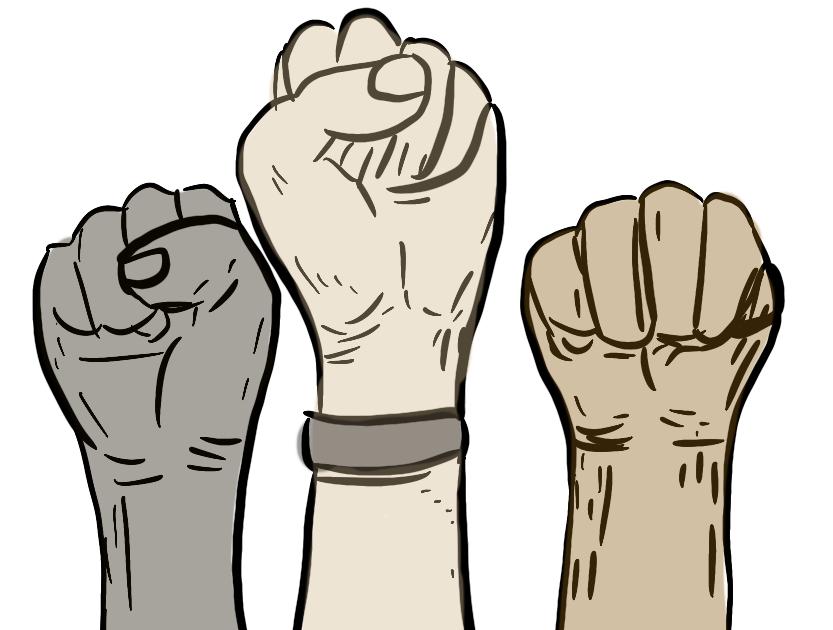

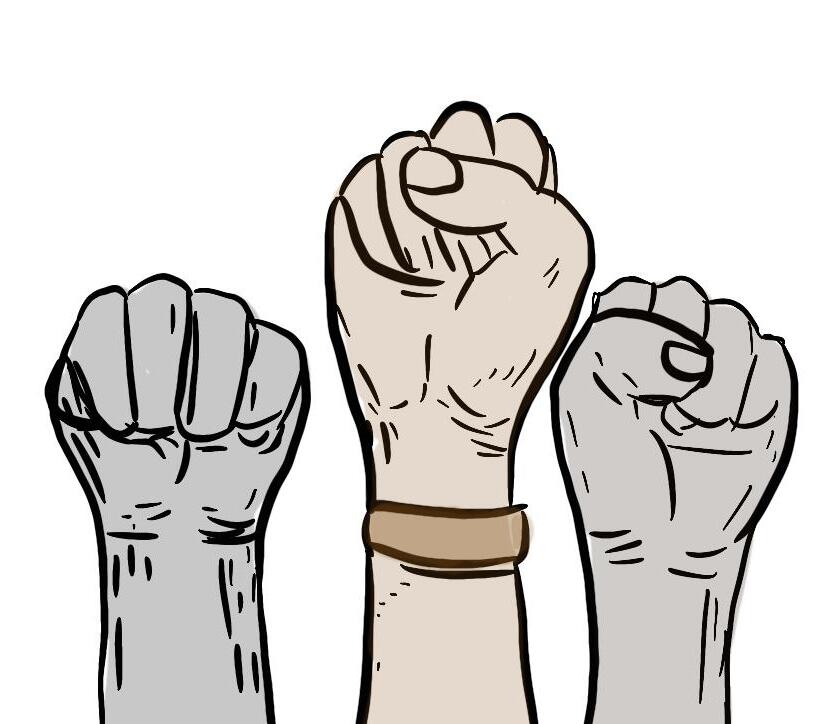


Anika Malik’s journey to becoming a CCS champion
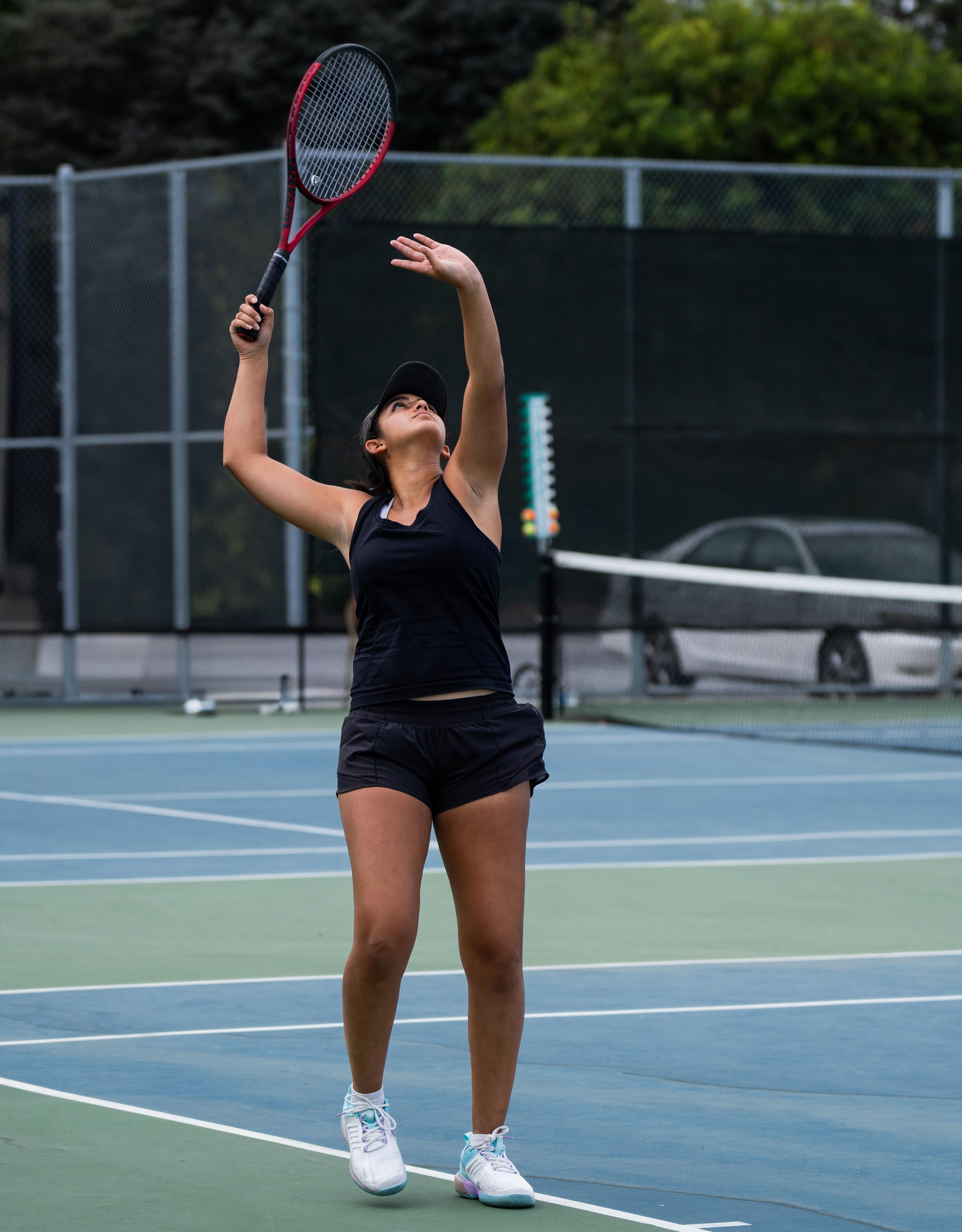
MIYA WIDMAN
social media editor
While most four-year-olds were learning to play hopscotch or balance on one foot, Anika Malik was out on the tennis courts.
Years later, Malik, who is currently a junior, is ranked second on the girl’s varsity tennis team, with an impressive Central Coast Section Doubles Championship win
I was really proud of myself,” Malik said.
To maintain her progress, Malik has a rigorous practice schedule, consisting of daily two-hour tennis practices, along with fitness sessions multiple times a week. Despite her nonstop training, Malik has learned to effectively balance her academic, social and athletic commitments through years of crammed schedules.
“The team and just tennis, in general, has taught me that not all of
“ “
THERE’S GOING TO BE DAYS WHERE I’M TIRED, AND WHERE I DON’T WANT TO GO TO PRACTICE AND ALL, BUT THEN I JUST HAVE

of the pressure of winning,” Malik said. “My favorite tournament site was Arizona. I went on mountain hikes, and saw so many cacti.” One of her biggest achievements was placing second in sectionals in Lafayette, California. “It felt like all my hard work paid off because I usually don’t do well in sectionals, since it’s a very high level, and
lights of my experience with ten nis — being on a team in general is just a super supportive environment and it takes some pressure off knowing that it’s not all up to you to win,” Malik said. “We had such a great time at the championships and it’s made our team a lot closer.”

the num ber one position during her senior year and follow in her sister’s footsteps to play collegiate tennis after high school
Now, Malik has started off her third year on the team dominating her opponents with a 6-0 record.
VICTORIA HUNT, YEECHEN PANG
sports editor | multimedia editor
In today’s digital age, social media has impacted the way fans watch sports and interact with players. Platforms such as Instagram, TikTok and YouTube allow people to connect with each other and their favorite teams in real time, whether it is through official or fan accounts, and have skyrocketed certain teams into the mainstream sports world.
While the National Football League’s Instagram is used mainly for the typical promotion of games, their TikTok account takes a different approach to their promotion. The videos feature more content directly from players, funny moments from pre- and postgames, showcasing the different personalities of players.
The NFL is not the only sporting league using this kind of marketing technique. The National Basketball Association’s TikTok also focuses on showing the emotional side of sports, conducting interviews with players and posting memes alongside the usual game content.
Additionally, many players have their own accounts, where they post content with behind-thescenes looks into their day-to-day lives. This content not only gives sports fans the opportunity to connect with their favorite players, but also allows them to connect with other fans around the country.
Fans will often post memes of comedic highlights, interact with fellow fans and even create edits
of players, continuously deepening the sense of community between fans and helping to build loyalty towards their teams.
Aside from allowing fans to create a genuine connection with players, social media has also brought more awareness to different leagues and various sports.
In the past, the Women’s National Basketball Association has significantly lacked viewership, with their previous highest viewer-
“ ”
ASIDE FROM ALLOWING FANS TO CREATE A GENUINE CONNECTION WITH PLAYERS, SOCIAL MEDIA HAS ALSO BROUGHT MORE AWARENESS TO DIFFERENT LEAGUES AND VARIOUS SPORTS.
VICTORIA HUNT

ship being 601,000 in 2004, compared to the NBA, with 29 million in 2008.
Caitlin Clark, who got drafted into the WNBA in 2024, has helped skyrocket women’s basketball into the public atmosphere. Previously playing at the University of Iowa, she garnered attention at a rapid pace due to the influx of edits to popular songs, and the continuous coverage of her on various platforms due to her extraordinary skill. Fans on social media helped highlight the phenomenal play-
er Clark is, bringing more regular people to watch the WNBA, not just previous basketball fans.
Clark’s debut into the WNBA helped the views jump to 2.23 million viewers for one game on Aug. 18, 2024, adding up to a total amount of viewers of 54 million over the season. Clark is not the only player to receive this attention, however — players like Paige Bueckeres also gained a significant amount of attention in a similar manner, with many fan edits of her and an abundance of coverage.
Without the help of fans and the constant flow of content being created, the amount of attention brought to women’s basketball has also surfaced light to issues in the WNBA, such as the pay gap and lack of transportation.
Despite the multitude of positives social media has brought to sporting communities around the world, it also provides a platform for teams and players to receive hate.
Fans often take to social media in order to bash rival teams, flooding comment sections with negative statements. Players and teams are constantly belittled on social media for small mistakes or because people are angry about a certain play.
The lack of sportsmanship and support towards other teams is not new to sports, as in-person fans can often be seen booing the opposing team. However, the amplitude of hate that players receive is taken to an extreme extent, where

fans are even found creating hateful edits towards opposing players.
Even with the unpleasant aspects that come with social media, it has changed the sports world.
Social media fosters a sense of community between teams and their fans, and it will continue to

bring both positives and negatives to various aspects of sports

CHLOE CHOE writer
After stepping down as a football coach last season, Chris Oswald entered a new stage in his career as the new athletic director of Cupertino High School.
During his 31 years of educational participation at four different schools, Oswald taught a variety of subjects including economics, world history and government. One of the most prominent parts of his career was his past coaching experience, with 31 consecutive years spent as a football coach.
Said Oswald, “So far, it’s been a big learning curve. It’s a lot of time sitting at a desk behind a computer, which wasn’t my strong suit, so I have a lot of learning to do.”
Oswald emphasized the significance of his past coaching experience, which helped shape his approach as an athletic director.
“I know how [just being visible] made me feel as a coach when my athletic director was visible to me and listening and maybe even looking for things that I wasn’t aware of, so I try to do that for [the athletes] as well,” Oswald said.
To establish further connection with CHS athletes, Oswald aims to visit two practices of ongoing sports per day. Additionally, to maintain his connection with the student body, Oswald serves as the advisor of the CHS Badminton Club and Ultimate Frisbee Club.
Oswald expressed his struggle with his career transition, from putting in hundreds of hours each summer to prepare for the football season to lead the team to success. One of his biggest challenges was walking away from devoting his time and effort to players who are current sophomores to seniors.
Said Oswald, “I hope people understand the word ‘retirement’ is different than quit. I would never quit on those guys [...] every day that you’re responsible to somebody, a group of people, and they’re responsible to you, I miss that part of it tremendously.”
Moving forward, Oswald hopes to provide a positive experience to the athletes at CHS by hiring competent coaches. He also emphasized his goal to increase the involvement of students in sports, addressing issues such as sports that do not have a junior varsity team







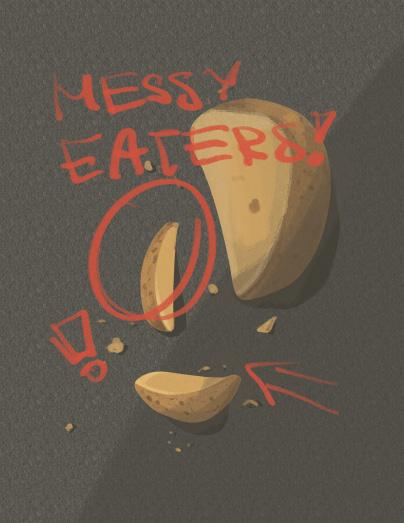







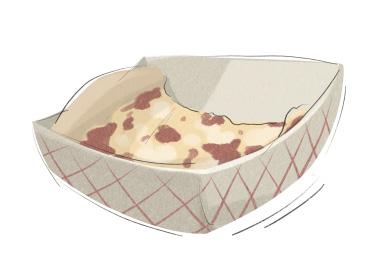
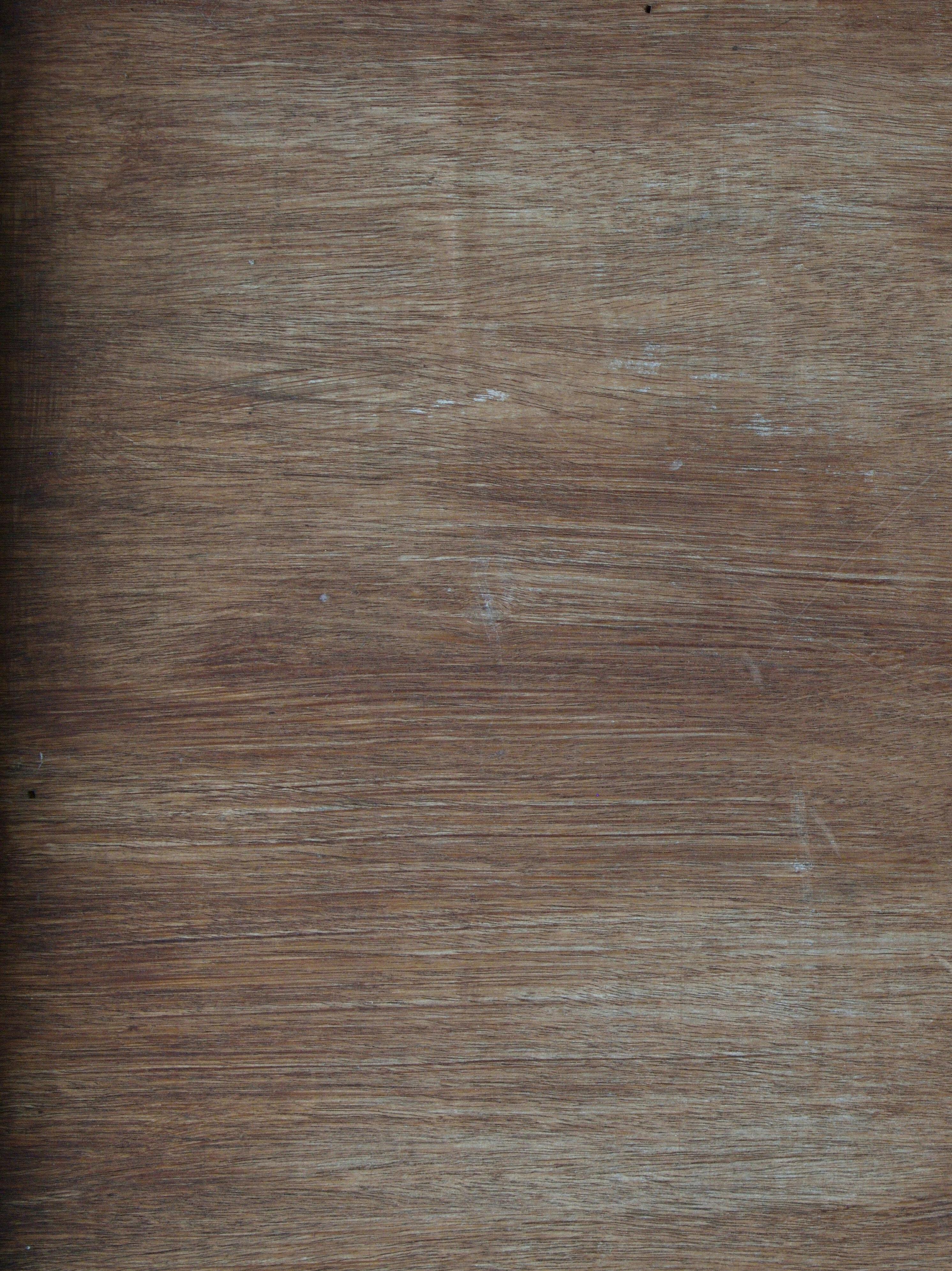


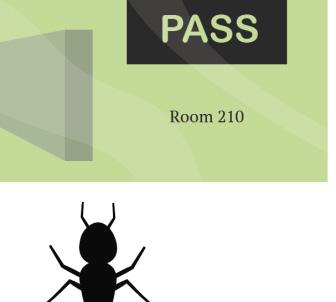

A “friendly” letter to some not-so-friendly visitors of our school
MADALINA ZHENG writer
Dear Cupertino High School ants,









SOFTBALL COACHES OFFICE
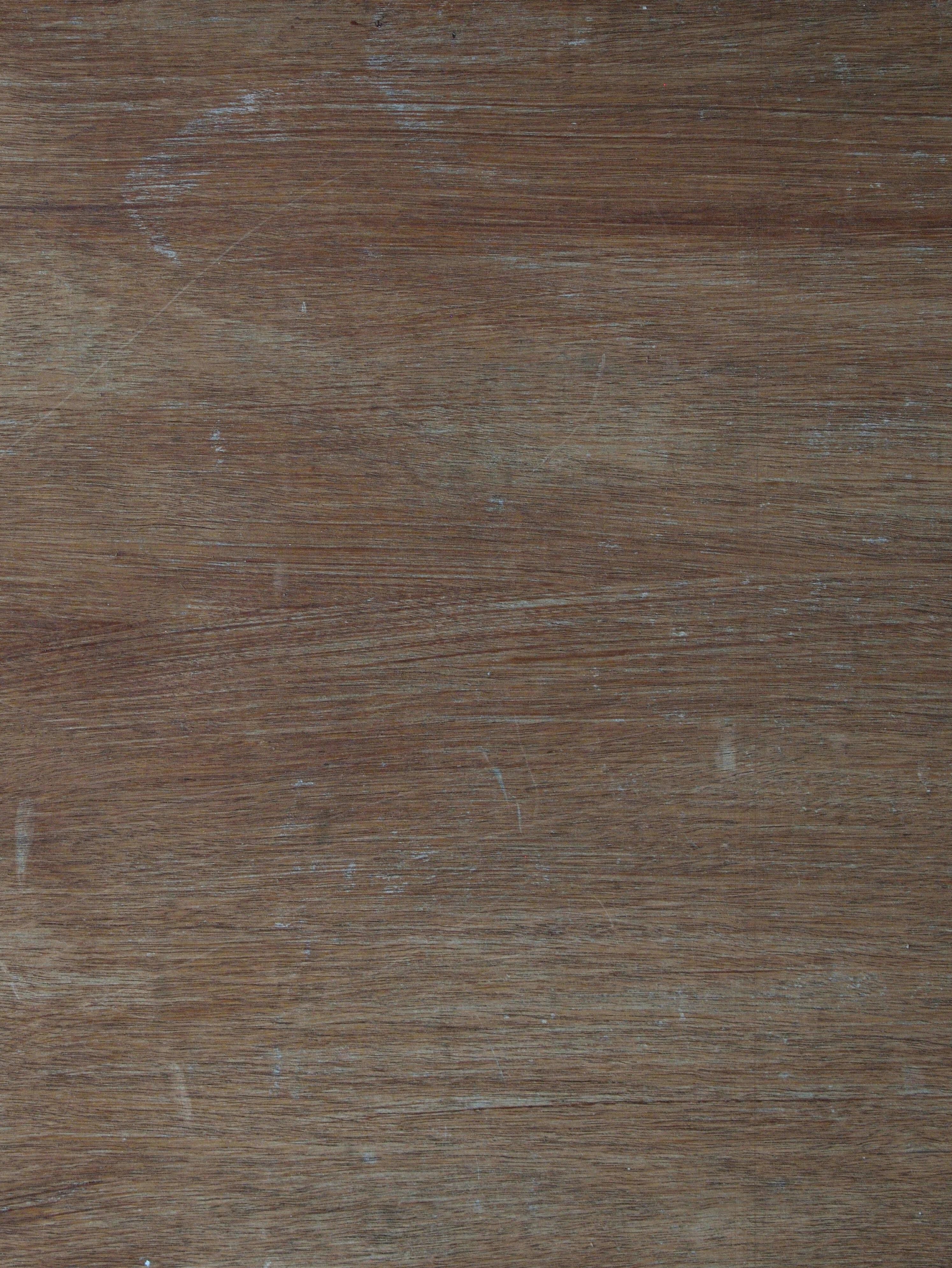
Hello there! I hope this letter finds you well. I just want to say –-

Speaking of food, My goodness.
GAS STORAGE CONNEX/ CLEANING SUPPLIES
DANCE STUDIO
Don’t get me started on the food.


Anyway, you guys are spotted everywhere around CHS. Your colonies form a complex network beneath the cracks of the school, silently carving tunnels to invade our personal space. When I look around the campus, specks of moving black dots decorate the white backdrop of our walls. Every teacher seems to have an issue with you – the source of snacks in each classroom can be located by following the trail of your footsteps. “Please throw food away outside,” becomes a daily reminder for us students to hear.
ROOM 10 WEIGHT ROOM TEAM ROOMS


It seems like the moment I place my lunch on the floor, twenty of you guys spawn into my checkered paper tray. I constantly need to make trips back to the cafeteria because my utensils are contaminated from trying to scoop you out of my meal. I get that you’re hungry and have a colony to feed, but do you really need to send your entire supply of soldiers to invade my food the moment I turn away? I thought ants were supposed to be scavengers who picked up scraps dropped on the floor, not little thieves who steal directly from my bowl! Even the seagulls show more respect than you.
GIRLS LOCKERS MAT ROOM BOYS LOCKERS POOL
TENNIS COURTS
You also show up in the most random places: my desk, my shoes, my backpack, my laptop — each appearance accompanied by a minor jumpscare. Every time you crawl within a close proximity to me, my short-lived peace is replaced with an “ew.” The creepy mandibles and six disgustingly hairy legs sticking out of your exoskeleton resemble something of a sleep paralysis demon. Thank god you’re only a few millimeters long.
FIELD HOUSE
Although CHS preaches for inclusivity and acceptance, you are definitely not welcome here. Please do us all a favor and leave this campus for good.
Not wishing you the best, Madalina Zheng
VALVE POOL CHEMICAL ROOM TANK



RESTROOM

NOAH KANG lifestyles editor





1st






